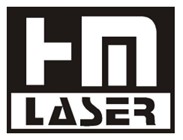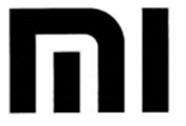
Case overview
In the recent invalidity decision, the proprietor was HM Laser, a manufacturer of laser cutting machines. The Applicant was Xiaomi, the renowned Chinese electronic manufacturer.
The Applicant challenged the following registration: UK Trade Mark No. 918284608 for HM LASER DEVICE in Classes 7 and 9:

They relied on a number of trade mark registrations for their MI DEVICE which covered a number of identical/similar goods in Classes 8, 9, 35, 42:

The legal tests needed to be successful under likelihood of confusion, reputation, passing off and bad faith were not met, and so the Applicant failed under these trade mark grounds.
However, they also relied on the copyright that subsists in the MI DEVICE and were successful.
What is needed to be successful under the copyright grounds?
As set out in this decision, if you are relying on copyright in proceedings, the two overarching tests that need to be satisfied are:
Test No. 1 – What is a work?
In order to determine whether there is an earlier copyright work, two of the key questions that need to be considered are as follows:
Unlike trade marks, copyright protection is not bound by country borders. If a copyright work is published in a country that is party to “the Berne convention”, then that copyright protection is recognised/enforceable in other countries that are also members. China and the UK have both signed up to the Berne Convention and so the copyright work that was published in China could be enforced in the UK.
Test No. 2 – How can we show a work has been copied?
There are two key subtests which need to be satisfied under this question:
Here, it was decided that (1) the Proprietor likely had access to the work, relying on the fact that the evidence showed Xiaomi have been highly successful in China, a country that the proprietor is established, and (2) the M in the original work was highly similar to the M in later mark and so “the similarities between the stylised letters “M” are more likely to be the result of copying than coincidence”.
Different assessments of similarity
The key point to be taken from this case is that even though the respective marks weren’t similar enough to for Xiaomi to succeed in a case based on likelihood of confusion, copyright afforded Xiaomi a helpful alternative option for enforcing its rights . For ease of reference, I set out a table which shows the different ways in which the rights were compared under the separate grounds:
| Grounds | Comparison | Visual similarity finding |
| Likelihood of confusion – S.5(2)(b) | Earlier trade mark: 
vs Contested mark: |
“The marks are visually similar to a low degree”.
|
| Earlier copyright – S.5(4)(b) |
Earlier Copyright Vs Contested mark: |
“In my view, the similarities between the stylised “M” letters are more likely to be the result of copying than coincidence”. |
Conclusions
The judgement demonstrates that, under the comparison of trade marks, the assessment of similarity between the dominant/distinctive elements is always in reference to the overall impression of both marks, i.e. other elements such as words, images, position within the mark etc.
However, the judgement also highlights that comparison between copyrighted works (where applicable) and trademarks is different as it is not necessary to assess the overall impression of the later mark in its entirety. It is only necessary to identify the features that have been allegedly copied, and then compare that to the original work (or a substantial part of that work).
Narrowing down the area of comparison can therefore mean it is easier to claim similarity by relying on copyright works, rather than earlier trade marks, which would have to compare the marks as a whole.
Our leading trade marks team regularly advise on UK oppositions.